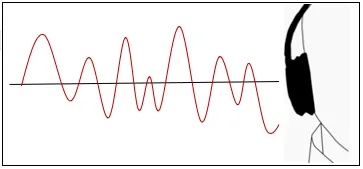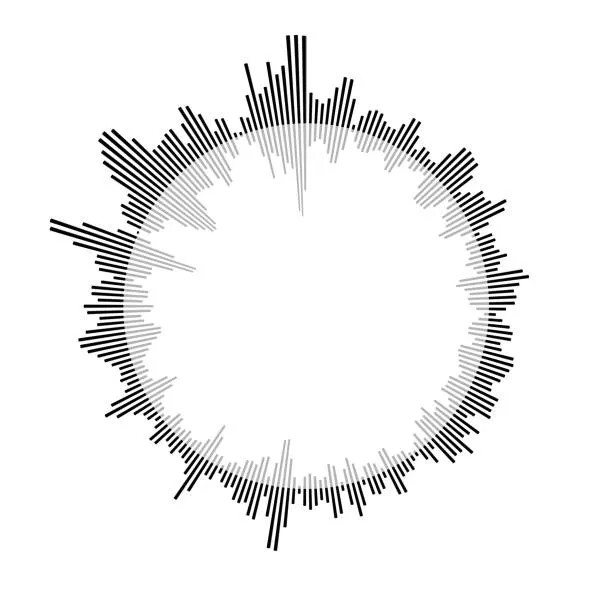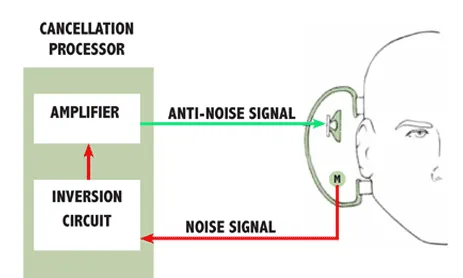"Unlocking Silence: How Noise Cancellation Technology Works"
 Ayan
Ayan
In a world filled with constant noise—from busy city streets to the hum of an office—noise-cancelling technology has become a lifesaver for those seeking quiet and focus. Whether it’s noise-cancelling headphones or soundproofing techniques, this technology has revolutionized how we manage and interact with sound. But how exactly does noise cancellation work? In this article, we’ll break down the science behind noise cancellation, explaining the technology, its applications, and how it creates those blissful pockets of silence.
1. Understanding Sound Waves
To understand how noise cancellation works, it’s important to first grasp the basics of sound. Sound travels in waves, which are created by vibrations in the air. These waves have different properties:
- Amplitude: This measures the height of the wave and determines the loudness of the sound. A higher amplitude means a louder sound, while a lower amplitude means a softer sound.

- Frequency: Frequency is the number of sound waves passing a point in one second. It’s measured in Hertz (Hz) and determines the pitch of the sound. Higher frequencies are perceived as higher-pitched sounds, while lower frequencies are deeper.

Sound waves can be either constructive or destructive when they interact with one another. This is where the principle of noise cancellation comes into play.
2. The Principle of Active Noise Cancellation (ANC)
The core concept behind active noise cancellation (ANC) is destructive interference. The idea is to counteract unwanted noise by introducing a second sound wave that is the exact opposite, or "anti-noise," to the original sound wave. When these two waves—one from the noise and one from the noise-cancelling system—meet, they cancel each other out.
Here’s how it works:
Microphones: Noise-cancelling devices are equipped with tiny microphones that continuously listen to the ambient sounds in the surrounding environment.
Inverting Sound Waves: Once the microphones pick up unwanted noise, the device generates a sound wave that is the exact opposite (or 180 degrees out of phase) of the detected noise.
Destructive Interference: The anti-noise sound wave is then played through the speakers, canceling out the original sound wave through destructive interference. The peaks of one wave meet the troughs of the other, reducing the amplitude and, as a result, canceling out the noise.
This process happens in real time, allowing users to enjoy quieter surroundings, even in noisy environments.

3. Types of Noise Cancellation
There are two main types of noise cancellation: active and passive.
a. Active Noise Cancellation (ANC)
Active noise cancellation, as described above, uses electronic systems to reduce unwanted sound. ANC is most effective at cancelling out low-frequency noises, such as the drone of an airplane engine, traffic hum, or air conditioning units. This is because these sounds have longer wavelengths, making them easier to target and cancel out through destructive interference.
There are typically two types of ANC:
Feedforward ANC: Microphones are placed on the outside of the headphones to detect noise and cancel it before it reaches the ear.
Feedback ANC: Microphones are placed inside the ear cups or ear canal, allowing for more precise noise cancellation by reacting to the sound as it enters the ear.
b. Passive Noise Cancellation
Passive noise cancellation, sometimes referred to as noise isolation, works by physically blocking sound waves from entering the ears. This is achieved through materials that absorb or reflect sound, such as thick padding, dense foam, or specially designed ear cups in headphones. While passive noise cancellation can effectively reduce high-frequency sounds like human voices, it is less effective at blocking low-frequency noises.
Passive noise cancellation doesn’t require electronics or batteries, as it relies solely on the design and materials of the device.
4. Applications of Noise Cancellation Technology
Noise cancellation technology has a wide range of applications, with its most popular use being in headphones. However, the technology extends beyond just personal audio devices.
a. Noise-Cancelling Headphones
The most well-known application of noise cancellation is in headphones, which are widely used by commuters, frequent flyers, and anyone looking to block out distracting sounds. ANC headphones are especially effective in noisy environments, such as airplanes or crowded public spaces, where they can drastically reduce background noise, allowing for a more immersive listening experience.
b. Automobiles
Many modern vehicles incorporate noise-cancelling systems to reduce engine noise, road noise, and vibrations inside the cabin. By integrating ANC technology into the vehicle’s audio system, microphones detect unwanted noise, and the system emits anti-noise sound waves to cancel it out. This results in a quieter, more comfortable driving experience.
c. Smartphones and Earbuds
Noise-cancelling technology is now a common feature in smartphones and wireless earbuds. These devices typically use a combination of ANC and passive noise isolation to provide a more immersive experience, whether listening to music, making calls, or engaging in video conferencing.
d. Industrial Applications
In noisy industrial environments, such as factories or construction sites, noise cancellation can be used to reduce the harmful effects of loud machinery on workers. Specialized noise-cancelling equipment like helmets or earplugs can protect hearing while allowing communication.
5. Limitations of Noise Cancellation
While noise-cancelling technology has come a long way, it’s not perfect. There are certain limitations to be aware of:
Effectiveness against high frequencies: ANC is most effective against low-frequency sounds, such as the hum of an engine or background noise. It is less effective at cancelling high-frequency sounds, such as sharp voices or sudden, irregular noises like car horns or sirens.
Battery life: Active noise-cancelling devices require power to function, meaning the technology is dependent on batteries. Continuous use of ANC can drain battery life faster, especially in wireless devices.
Sensation of pressure: Some users report feeling a slight "pressure" in their ears when using ANC headphones, particularly when the technology is counteracting low-frequency noise. This sensation is harmless but can be uncomfortable for some.
6. Future of Noise Cancellation
The future of noise cancellation is exciting, with advancements aiming for even more precision and efficiency. As technology improves, noise-cancelling devices will likely become better at reducing high-frequency sounds and minimizing the battery drain associated with ANC. We can also expect more integration of noise cancellation in everyday devices, from smart home speakers to augmented reality systems.
Conclusion
Noise cancellation has become an essential part of modern life, helping people manage noise pollution and improve their focus, comfort, and overall well-being. Whether you're trying to enjoy music without distractions or seeking peace and quiet in a noisy world, noise-cancelling technology can make all the difference. By understanding how sound waves and destructive interference work, we can appreciate the science behind the silence and look forward to even better noise-cancelling solutions in the future.
Subscribe to my newsletter
Read articles from Ayan directly inside your inbox. Subscribe to the newsletter, and don't miss out.
Written by

Ayan
Ayan
"I post blogs here in a simple way, so that a 5-year-old can read and understand them."